How to Ensure Your Brand’s Value Proposition Resonates with Site Visitors
You only have a couple of seconds to win site visitors over. How do you ensure your Brand’s Value is experienced and felt as quickly as possible? Check out the tips and examples below.

The average visitor to your website will spend a maximum of 20 seconds trying to discover if you offer a solution to their problem. If they hit a roadblock and can’t understand what you’re offering, they could head to one of your competitors within as little as 10 seconds.
That’s why it’s so important that you tell visitors why your products or services are exactly what they’re looking for and clearly define what puts you ahead of your competitors. A good value proposition will help you convey that message.
Clarity and effective value are the top characteristics of every value proposition. This means that your messaging should speak the language of your customers and communicate how opting for your brand will help them solve specific pain points.
There are many other elements you’ll need to work on to refine your value proposition. We’ll dedicate a section to each of them in this article, so feel free to dive in and learn how to create your brand’s ideal value proposition.
1. Prioritize Customer Value Over Product Descriptions
It can be tempting to want to list all of your product’s features and every amazing thing it can do. But that approach doesn’t sell, quite simply. Always keep in mind that potential customers care more about what you can do for them than they care about how you’re going to do it.
Instead of focusing on how amazing your product is in your value proposition, aim to tell how those features will solve certain problems and make your customers’ lives easier.
Put the emphasis on the unique benefits of your solution instead of talking about its functionality. Describe the amazing world you’re creating for your customers. The entire experience of doing business with you should be more than just a stack of features.
This is how Stint, a provider of flexible staff, creates its value proposition. They let their prospects know they have just what they’re looking for right at first glance. Their customers already know their problem and what they need to fix it, so Stint immediately jumps to stating the benefits of using their service in their value proposition.

Source: Stint.co
Another great example here is Nextiva, a customer communications service. They remind everyone with their value proposition’s headline that they not only help with running a business but also with simplifying that process. Followed by a short paragraph that describes their solution, this proposition already places them ahead of their competition.
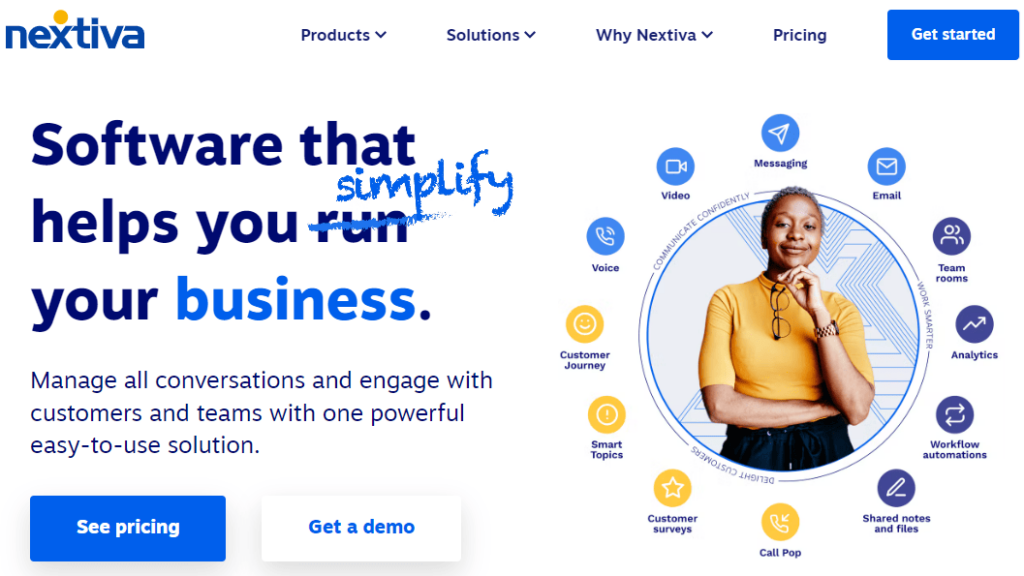
Source: Stint.co
2. Understand Your Audience
Your customers have unique needs and fears when it comes to solving a problem. So, it’s essential that you learn the language that your target audience speaks and use it to reassure them that you’ll meet their needs and put an end to their fears.
However, you should never guess what your target audience’s pain points are. There’s a high probability that you perceive and address your products/services quite differently compared to how your customers see them. That’s why you need to look for answers outside of your professional environment.
The best way to do that is to build your buyer personas. The process will entail plenty of research, conducting surveys and interviewing your customers, gathering traffic and behavioral data, and using A/B testing tools.
When you discover the major pain points of your target audience, reference those that are most relevant to them.
Go above and beyond by not only leveraging your customers’ needs and fears but focusing on their wants as well. Consider the psychological aspect of your customers’ purchasing drivers to give an emotional touch to your value proposition.
3. Don’t Take Yourself Too Seriously
It always helps to set a friendly tone with your target audience. Appearing cute and smart while not compromising your main message is a great way to establish the kind of connection that will make it easier for you to get your points across.
You can attract a bigger customer base if you incorporate humor and add something catchy to your value proposition. That way, people will find you approachable and easy to do business with, which is a huge boost to your entire brand image.
However, going over the top with this approach will have negative consequences on your authority as an industry front runner. You don’t want to overdo the casual approach; instead, balance things out by maintaining a professional attitude.
Removing any bland sales jargon and using witty references will do wonders for establishing a bond with your audience. But remember that if you decide to go down this path, make it a part of your brand voice and use it consistently throughout all of your marketing efforts.
SomniFix, a brand that offers solutions that promote nose breathing, offers a great example. They balance out quite an edgy/confrontational value proposition in their headline with excellent supporting text that frames the meaning of their main message.

Source: Somnifix.com
Another great example of leveraging quirky language and humor is I Done This, a productivity management tool. They use slang and emojis to reach younger, laid-back audiences and to make sure they stand out among the numerous similar options out there.
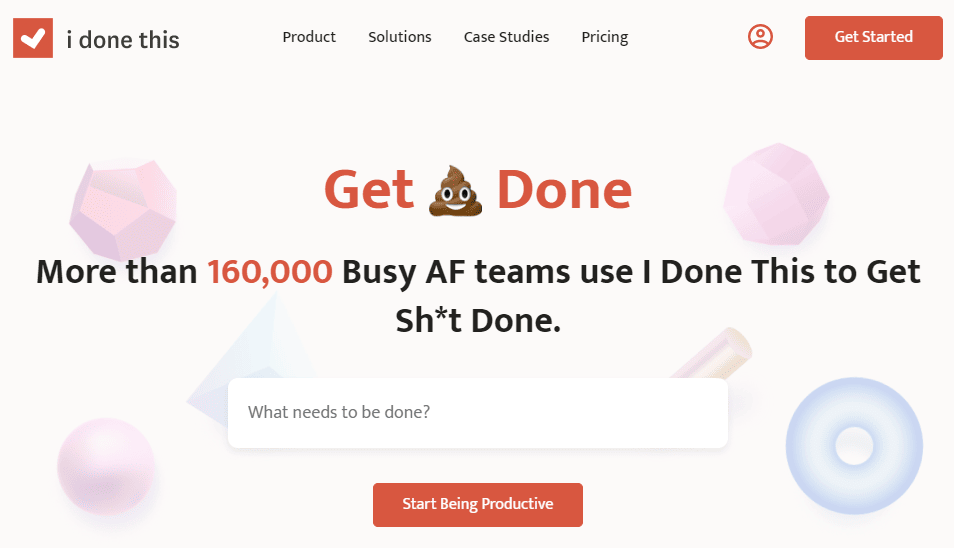
Source: Somnifix.com
4. Make Real, Measurable Claims
If you want to stand out as an expert in your field, you need to provide evidence that the benefits of your solution are real. Citing numbers and including percentages in your value proposition is a great way to do this. It will show measurable proof that your products and services work as intended.
Tell your customers how you’ll improve their lives in ways that mean something to them – ways that can be measured. Don’t promise vague, abstract things that are impossible to verify and validate.
Ideally, you can include concrete figures and stats that support your value proposition claims. Here are some examples of how that looks:
- “reduce fat intake by 11%”
- “boost conversions by 40%”
- “double the productivity of your team”
- “join our community of 12,000 industry leaders”
Glean offers us a nice, simple example of this type of value proposition. They give their visitors a clear indication of how quickly they’ll be able to explore meaningful metrics using their product.

Source: Glean.io
5. Support Claims with Visuals
You can notice that almost every example in this article supplements the value proposition statement with a visual. This is because images, videos, hero banners, infographics, and other visual elements convey a message much faster and much better than words.
So, if you’re making a promise with your value proposition, try to illustrate it with an eye-catching visual. This will increase your chances of capturing your customer’s attention.
Incorporating visual elements is especially important if you sell a physical product. Make sure to feature it in a way that resonates with the value proposition. Make them aspirational for the shopper. Give them FOMO.
Fire Pit Surplus does this very well with the image they chose to supplement their “Upgrade Your Backyard Today” value proposition. As a company that sells fire pits and fireplaces, Fire Pit Surplus showcases its products visually, so customers are immediately hooked without having to decode the textual proposition.
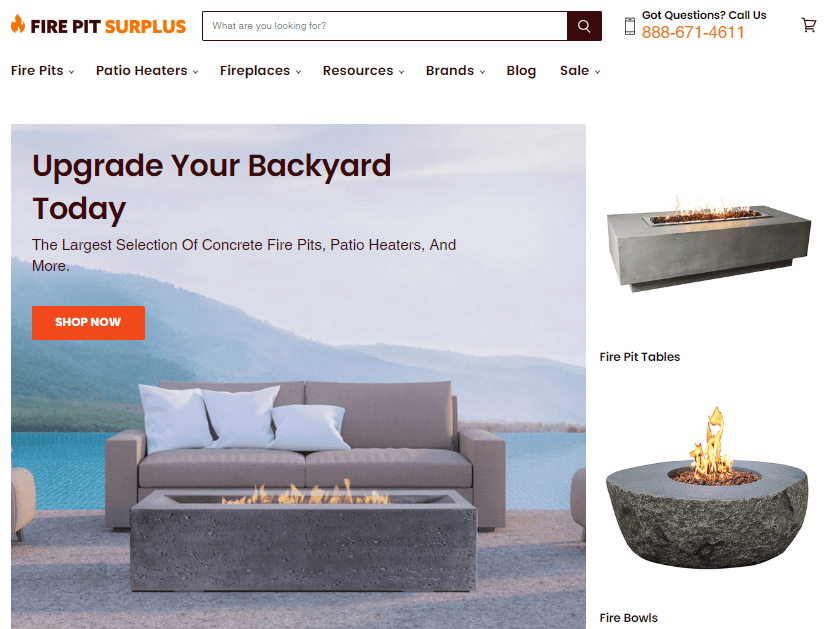
Source: Firepitsurplus.com
Similarly, the sports clothing giant, Under Armour, manages to visually aid its value proposition – “Our softest fabrics for your hardest workouts” – in a way that resonates with the message. By showing real people using their products, Under Armour demonstrates its claim in action.
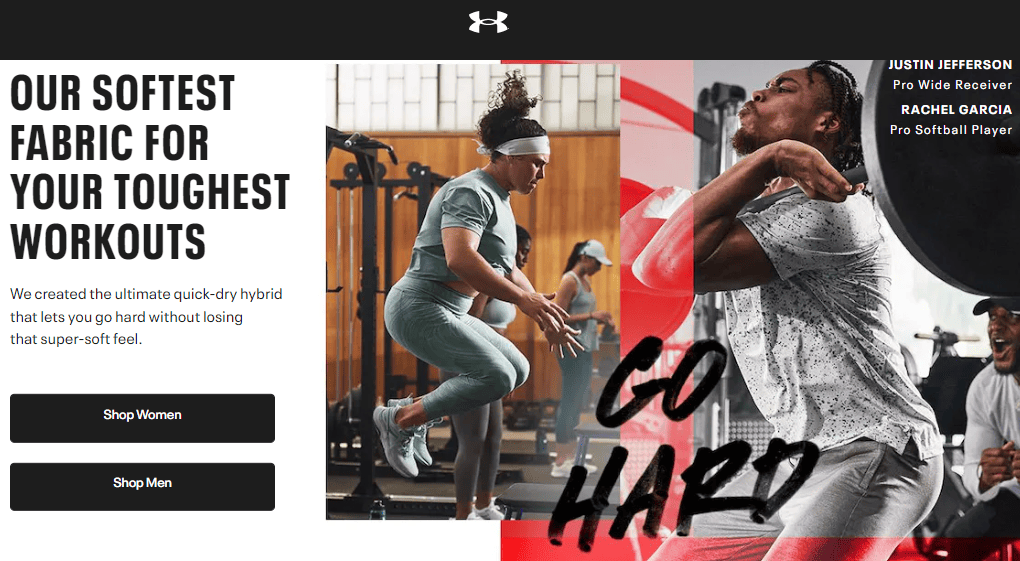
Source: Underarmour.com
6. Remember Your Content Pages
The usual spot to place your strongest value proposition is your website’s homepage. However, many of your visitors will enter your site via blog pages they’ve found on Google or social media.
If this happens, you still need to explain to them what your brand does. Even though they’re on the page to read the content and not necessarily interact with your brand, it’s super important that they associate a particular promise with your domain.
You never know when you can capitalize on an effective value proposition statement, so make sure you feature one on your blog posts, product pages, and landing pages, besides your homepage. Basically, it’s a good practice to include your message on all of the main entry points to your website.
Sleep Junkie is an excellent example here. The mattress experts manage to extend their value proposition in many of their blog posts. Whenever a visitor stumbles upon one of their articles, like in their best adjustable beds post below, they’ll see the simple statement on the sidebar – “Find The Best Mattress”.

Source: Sleepjunkie.com
7. Pay Attention to Nearby UI Elements
Most of your website visitors won’t notice every single detail on your homepage or any other page they access. They are naturally drawn to what they came to look for first, and the value proposition is usually the first thing they’ll see and read.
That’s why you need to understand that everything you place close to the value proposition expands on it one way or another. Visitors will associate claims, visual components, and functions with the main message. Let’s explore some elements that you can use to leverage this to your advantage.
8. Social Proof
Visitors are always more likely to trust your promise if you show a reference to social proof close to your value proposition.
This is especially important if your value proposition headline or subtext contains a term that communicates a customer benefit like “easy,” “convenient,” “quick,” “affordable,” etc.
Brakes To You, a mobile brake repair service, does this well by including star ratings and customer reviews right below their main value proposition. The customers use the same words as the main message to describe Brakes To You’s service – convenient, fast, friendly, affordable.

Source: Brakestoyou.com
9. CTAs
Call-to-action buttons are crucial website elements for securing conversions and guiding customers on their buying journey.
If your CTAs are labeled well and tell users what they can do on your site, placing them close to your value proposition is a great idea. They’ll expand on the value proposition and add an “action” element to it.
Enticing wording that is short and straightforward is a must to conclude the main message of your value proposition.
Preset Love is a free Lightroom presets depository that manages to implement a CTA in this fashion. They place it in close proximity to their value proposition, and its wording is aligned with the promise they make.

Source: Presetlove.com
10. Core Site Functions
If you’re selling a service, there’s nothing more valuable to your customers than showing right on your homepage what that service does.
Placing your value proposition next to a functional core site feature means that your solution will be well-illustrated and less confusing for your customers. In other words, you’ll have to explain less because visitors can use it and see for themselves what you’re offering.
UnscrambleX is great in this regard. This site enables users to unscramble letters and find high-scoring words for games like Scrabble. They put one of their tools right under their main value proposition, so visitors can test it immediately when they access their website and know they’re at the right place.
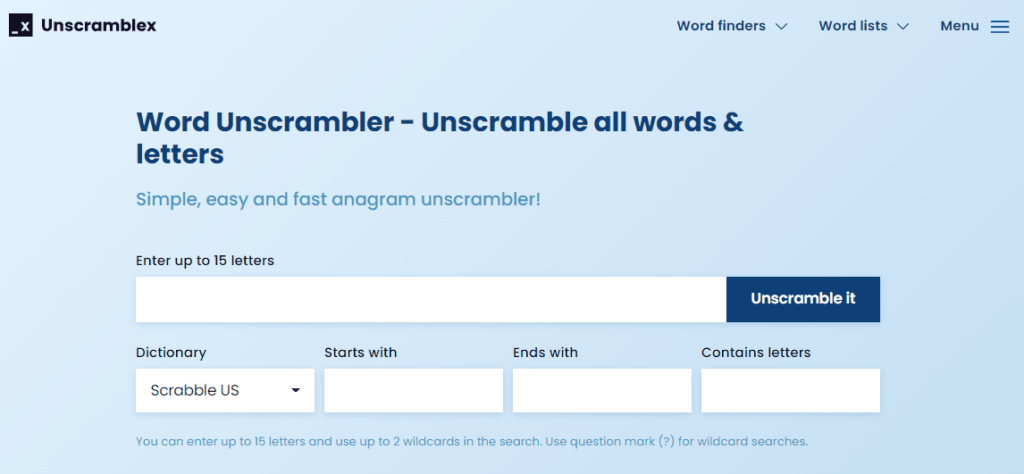
Source: Unscramblex.com
Another great example is VirusTotal, an online malware and breach detector. They align their free virus scanner with their value proposition, letting users witness the power of their tool before they make a decision to move forward with some of their premium services.
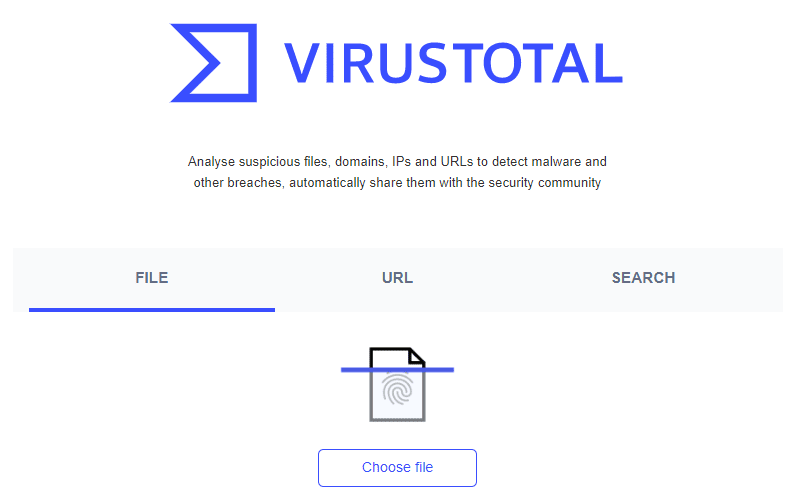
Source: Virustotal.com
Final Thoughts
With the limited options there are to capture potential prospects and convert them to loyal customers, your business definitely needs a strong marketing strategy. And that strategy begins with a great value proposition, which will serve as a solid foundation for all further efforts.
A clear and well-tested statement will go a long way in informing customers on why they should trust your brand and buy from you. Enhance it with visual elements such as images or short videos. Elements like social proof, CTAs, and core site functions can also help you get your message across.
The best approach to crafting a fantastic value proposition is to experience your business from the perspective of your customers. Remember, your goal is to concisely deliver a strong message that resonates with their wants and needs.
FAQ
What Is a Brand Value Proposition?
A brand value proposition is a unique promise that a brand makes to its target audience, highlighting the specific benefits and value that customers can expect from the brand’s products or services.
Why Is Defining a Brand Value Proposition Important?
Defining a brand value proposition helps establish a brand’s identity, differentiate it from competitors, attract the right audience, and create a compelling message that resonates with customers.
How Do You Develop a Strong Brand Value Proposition?
Develop a strong brand value proposition by conducting market research, understanding customer needs, defining your brand’s unique strengths, and crafting a clear and concise value statement.
What Are Some Key Components of a Brand Value Proposition?
Key components include a unique selling proposition (USP), a clear statement of benefits, an understanding of the target audience, and a focus on addressing customer pain points.
How Does a Brand Value Proposition Influence Marketing and Messaging?
A brand value proposition guides marketing efforts and messaging, ensuring that all communications align with the brand’s core promise and resonate with the intended audience.
Can a Brand Have Multiple Value Propositions for Different Products or Segments?
Yes, a brand can have multiple value propositions for different product lines or target segments, tailoring messages to address specific customer needs.
Should a Brand Value Proposition Evolve Over Time?
A brand’s value proposition may evolve to adapt to changing market conditions, customer preferences, or business strategies, but it should remain consistent with the brand’s core identity.
How Does a Strong Brand Value Proposition Impact Customer Loyalty?
A strong value proposition builds trust and loyalty by consistently delivering on promises, meeting customer expectations, and fostering a deeper connection with the brand.
What Role Does Storytelling Play in Conveying a Brand’s Value Proposition?
Storytelling is a powerful tool for conveying a brand’s value proposition. It helps humanize the brand, engage customers emotionally, and illustrate how the brand fulfills its promise.
How Can Brands Communicate Their Value Proposition Effectively?
Effective communication involves using various marketing channels, crafting compelling messages, showcasing customer success stories, and providing evidence of value through testimonials, reviews, and case studies.
Is a Brand Value Proposition the Same as a Slogan or Tagline?
No, a brand value proposition is a comprehensive promise of value, while a slogan or tagline is a concise, memorable phrase that often encapsulates the brand’s promise.
What Is the Difference Between a Value Proposition and a Mission Statement?
A value proposition focuses on the specific benefits offered to customers, while a mission statement outlines a brand’s broader purpose, values, and overall goals.
Can a Brand’s Value Proposition Change in Response to Market Trends?
Yes, a brand’s value proposition can adapt to align with evolving market trends, emerging customer preferences, and shifts in the competitive landscape.
How Does a Strong Value Proposition Impact Pricing Strategy?
A strong value proposition can justify premium pricing by emphasizing the unique benefits and value customers receive, potentially leading to higher profit margins.
What Role Does Market Research Play in Crafting a Value Proposition?
Market research is essential for understanding customer needs, preferences, and pain points, providing valuable insights that inform the development of a compelling value proposition.
Can a Brand’s Value Proposition Extend Beyond Product Features to Include Values and Ethics?
Yes, a brand’s value proposition can encompass values, ethics, and social responsibility, appealing to customers who prioritize these aspects when making purchasing decisions.
How Can Brands Ensure Consistency in Delivering Their Value Proposition?
Consistency is maintained by aligning all brand touchpoints, from product quality to customer service, with the brand’s value proposition to create a unified and coherent brand experience.
Is a Brand Value Proposition Exclusive to B2C Brands, or Does It Apply to B2B Brands as Well?
A value proposition is relevant to both B2C and B2B brands. B2B value propositions focus on addressing business needs and delivering unique solutions.
What Are Some Notable Examples of Brands with Strong Value Propositions?
Examples include Apple’s focus on innovation and user experience, Tesla’s commitment to sustainability and cutting-edge technology, and Nike’s emphasis on empowerment and performance.
Can a Strong Value Proposition Help Startups Compete in Established Markets?
Yes, a strong value proposition can differentiate startups in competitive markets, attracting early adopters and building a loyal customer base, even when competing against established players.
How Can Brands Ensure Their Value Proposition Aligns with Customer Expectations?
Brands should regularly gather customer feedback, conduct surveys, and analyze customer behavior to ensure their value proposition remains in sync with customer expectations.
What Are Some Common Mistakes Brands Make When Crafting Their Value Proposition?
Common mistakes include making vague promises, overpromising and underdelivering, and failing to effectively communicate the value proposition to the target audience.
Is a Brand’s Reputation Linked to Its Value Proposition?
Yes, a brand’s reputation is closely tied to its value proposition. A consistent and positive fulfillment of promises strengthens the brand’s reputation over time.
Can Brands Have Both a Value Proposition and a Brand Promise?
Yes, a value proposition and a brand promise are related concepts. The value proposition communicates the promise of value, while the brand promise represents the commitment to fulfill that promise.
How Can Brands Use Customer Testimonials to Reinforce Their Value Proposition?
Customer testimonials can serve as social proof, showcasing real experiences and demonstrating how the brand’s value proposition has positively impacted customers.
What Is the Connection Between a Brand’s Unique Selling Proposition (USP) and Its Value Proposition?
A brand’s USP often forms a crucial part of its value proposition, as it highlights what sets the brand apart from competitors and contributes to the overall promise of value.
Can Brands Modify Their Value Proposition to Target Different Customer Segments?
Yes, brands can create tailored value propositions for different customer segments to address their unique needs, pain points, and preferences.
Should Brands Revisit and Revise Their Value Proposition Periodically?
Yes, periodic reviews of the value proposition are essential to ensure it remains relevant, aligns with evolving market dynamics, and continues to resonate with the target audience.
How Do Brands Ensure Internal Alignment with the Value Proposition Across Departments?
Internal alignment involves clear communication of the value proposition to all employees, training programs, and fostering a shared understanding of how each department contributes to delivering on the brand promise.
What Is the Role of Emotional Appeal in a Brand’s Value Proposition?
Emotional appeal is essential in creating a strong connection with customers. Brands often incorporate emotional elements into their value proposition to elicit specific feelings or sentiments that resonate with their audience.
How Can Brands Leverage Social Media to Communicate Their Value Proposition?
Brands can use social media platforms to showcase their unique value proposition through engaging content, storytelling, and visual elements that resonate with their audience.
Is It Necessary for a Brand’s Value Proposition to Evolve Over Time?
While a brand’s core values may remain consistent, its value proposition may need to adapt to changing market conditions, customer preferences, or business strategies.
Can Brands Use Data Analytics to Refine Their Value Proposition?
Yes, data analytics can provide insights into customer behavior, preferences, and feedback, allowing brands to refine their value proposition for maximum relevance.
What Strategies Can Brands Employ to Stand Out in Competitive Markets Through Their Value Proposition?
Brands can stand out by emphasizing unique benefits, offering exceptional customer service, demonstrating a commitment to quality, and consistently delivering on their value proposition.
How Do Brands Ensure Authenticity in Their Value Proposition?
Authenticity is maintained by aligning actions with promises, being transparent, and genuinely caring about meeting customer needs rather than just marketing slogans.
What Is the Connection Between Brand Loyalty and a Strong Value Proposition?
A strong value proposition builds brand loyalty by consistently meeting customer expectations and fostering trust, leading to repeat business and advocacy.
Can Brands Use Visual Branding to Reinforce Their Value Proposition?
Visual branding elements, such as logos, color schemes, and imagery, can help reinforce a brand’s value proposition by visually conveying its identity and promise.
How Can Startups Establish a Compelling Value Proposition in Competitive Markets?
Startups can establish a compelling value proposition by identifying a niche, solving a specific problem, and clearly communicating the unique value they bring to customers.
What Are Some Ways Brands Can Address Ethical and Sustainability Concerns in Their Value Proposition?
Brands can address these concerns by incorporating ethical and sustainable practices into their operations and clearly communicating these values as part of their value proposition.
Can Brands Use Storytelling to Create Emotional Connections Through Their Value Proposition?
Storytelling is a powerful tool for creating emotional connections. Brands can tell stories that illustrate how their products or services positively impact customers’ lives, reinforcing their value proposition.
What is a brand’s value proposition, and why is it important for a website?
A brand’s value proposition is a unique promise it offers to customers. It’s crucial for a website as it communicates why visitors should choose the brand.
How can a brand’s value proposition be effectively communicated on a website?
Effective communication of a value proposition involves clear messaging, compelling visuals, and addressing the needs and desires of the target audience.
What are the key elements of a compelling value proposition for a website?
Key elements include a clear statement of benefits, differentiation from competitors, and a focus on solving the customer’s pain points.
Why is it important for a value proposition to resonate with site visitors?
When a value proposition resonates, it creates a strong emotional connection with visitors, increasing the likelihood of conversions and brand loyalty.
How can businesses identify if their value proposition is resonating with website visitors?
Businesses can use analytics to track visitor engagement, conversion rates, and feedback to assess the effectiveness of their value proposition.
What role does customer feedback play in refining a brand’s value proposition?
Customer feedback provides valuable insights into whether the value proposition aligns with customer expectations and can inform adjustments.
Are there examples of brands that have successfully resonated with their website visitors through their value proposition?
Yes, brands like Apple, Nike, and Amazon have effectively communicated their value propositions, resulting in strong customer loyalty.
How can storytelling be used to enhance the resonance of a brand’s value proposition?
Storytelling allows brands to convey their values and mission in a relatable way, making the value proposition more compelling.
What strategies can businesses use to test and optimize their value proposition on their websites?
A/B testing, user surveys, and heatmaps can help businesses gather data and refine their value proposition for better resonance.
What are the potential pitfalls businesses should avoid when crafting a value proposition for their website?
Businesses should avoid being too vague, making unsupported claims, and neglecting to address the specific needs of their target audience.
Improve your Marketing with the Power of AI
See how you can start with AI Marketing and reach your goals faster than ever before. Check out the Tips, Strategies, AI Tools, Masterclass, Courses, and Community. Unleash the true potential of your brand with the help of AI.